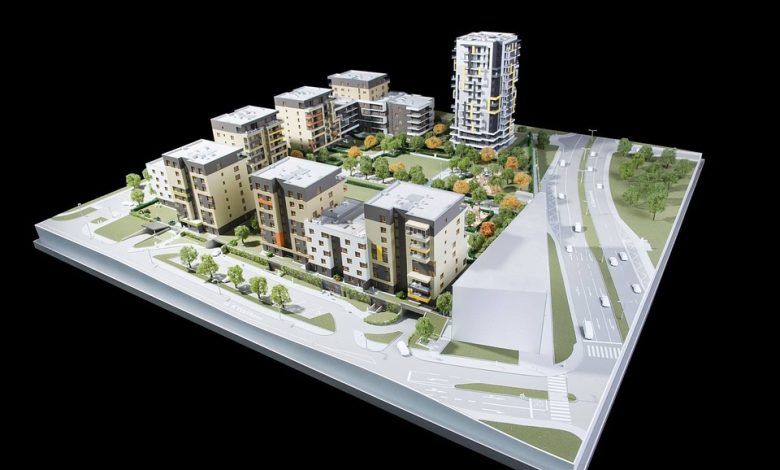

By Joachim Ng
One of Ipoh city’s most illustrious sons, civil society leader and chairman of the Alliance for a Safe Community Tan Sri Lee Lam Thye, has urged the Government to prioritise maintenance as a cornerstone of national policy and practice because our lives, our safety, and our future depends on it.
“Stringent regulations and enforcement, adequate funding and punitive actions are essential to ensure compliance with rules and regulations. Let us not wait for a disaster to jolt us into action,” Tan Sri Lee said last month.
He repeated his call, first made 10 years ago, that the time had come to curb this malaise. “Maintenance and service have never been the country’s forte. We are good at providing state-of-the-art buildings and equipment but we have many shortcomings and weaknesses in maintaining them. We must embrace the culture of regular maintenance,” said Tan Sri Lee in June 2014 as chairman of the National Institute of Occupational Safety and Health.
Disaster has struck a thousand times over the past 10 years and still there is widespread complacency, bureaucratic inertia, short-term political thinking, and an absence of standard operating procedures to ensure preventive maintenance.
Three months ago, a falling tree in busy downtown Kuala Lumpur killed one man. His death caused by neglect of tree maintenance ought to have triggered alarm bells everywhere. But did it?
Slightly more than one month ago, a Genting bus crash killed two foreign tourists. An investigation found that the bus had an expired permit, the driver had no licence, and the bus had also exceeded the time allowed to operate as the vehicle was over 15 years old.
Just last month, a ratepayer in Taiping complained to the municipal council about overhanging tree branches on a main road that could break off because of their weight. He received no response despite personally visiting the council office, going to the state asssemblyman’s service centre, and even contacting two state executive councillors.
Ipoh Echo reported on July 6 that plants thriving in a drain near Pinji Centre Point in Kampar Park, compounded by branches and tree trunks stuck in the middle of it, could block the drain’s water flow and cause flash floods during heavy rain.
In Kuala Lumpur, residents of seven housing estates complained last month that the children’s playgrounds in their areas are so badly maintained that they find it best to stay away from these hazardous areas dotted with dislodged rubber pavers, cracked steps, unstable benches, broken equipment, abundant litter, untrimmed grass, and stagnant water breeding mosquitoes. Children have been known to suffer injuries.
Towards end-July a resident in Selangor wrote about the local council’s lack of urgency when he complained to it about the dangerously bad condition of his neighbourhood children’s playground. The council gave the excuse that repairs were on hold pending contractor selection.
Last month Ipoh Mayor Datuk Rumaizi Baharin defended the city council’s low percentage of road repairs. “For example, in four years, we repaired 300 km, but it’s less than 10 percent compared to the total,Rumaizi told Ipoh Echo on July 7.
“The roads here are average and moderate, not terribly bad,” he said at a press conference when asked about public complaints regarding the poor condition of roads in the city, which are potholed and not repaired.
Most, if not all, city councils in Malaysia have failed to deliver satisfactory basic services to neighbourhoods and will continue to fail. However, according to reports by the Union of International Associations, many cities around the world are hit by the same problem and more are falling into this deepening pothole.
Many urban neighbourhoods are neglected because of the complex delivery systems for the provision of basic services. It is the familiar problem of centralisation versus decentralisation. City councils want to micromanage down to neighbourhood level as they want centralised resource allocation and appointment of service contractors. This allows them to select areas to focus the money on.
The inevitable result is costly central overheads, failure to provide rapid response to local conditions, and overstretched service providers. How can your drain or pothole be important when the focus is elsewhere?
Our Connexion column has raised this subject many times over the past few years. We have highlighted the solution that ratepayers all over Malaysia have resorted to, and that is, they volunteer their services at their own expense.
Ikatan Silaturahim Brotherhood, a nationwide volunteer organisation founded in 2007, sends its Ipoh members to spray-paint warning markings around potholes to warn motorists of the danger. The team led by B. Batmanathan (the city’s local Batman hero) goes to an affected area whenever it receives a complaint on their Facebook page.
The Brotherhood got its cue from Malaysia’s greatest urban folk super-hero, Panjang, who has over a span of almost 20 years cycled around the neighbourhoods in Johor Baru to fix road potholes and clear drains at his own expense. Panjang also inspired Nasir who, three years ago, decided to personally organise pothole repairs around Chowrasta Market in Penang.
As far back as 2019, our Connexion column has lamented the unchanging three-tier system of government — federal, state, local. This outdated structure puts authority in the hands of a city council to execute functions concerning the welfare of all residents in a city locality. That’s why it is called local government.
The structure was designed for 19th century cities. How big were they? How big are these same cities now? How big was Ipoh and Kuala Lumpur at the start of the 20th century? How big are they now?
Cities of today with their huge populations are beyond the ability of local government to manage well. They focus on the big things and neglect the small things (which they obviously choose to do), or they focus on the small things (just to please you) and neglect the big things. No council is able to do both.
In the Connexion article of 1 Sept 2020, we wrote: “This model of governance that Malaysia is glued to is a proven failure. Several countries already know that you can’t micromanage a drain from 10km away, and they are switching to a tried model of localism called neighbourhood governance.”
Service delivery isn’t any city hall’s glass of tea tarik. Why should any council official travel 30 minutes to an hour to look at your drain? You are the one closest to the drain: you can do a better job supervising the cleaners. Panjang, the Brotherhood members, and Nasir have demonstrated that ratepayers should be empowered to self-govern their neighbourhoods.
One model of the grassroots tier of governance is to establish neighbourhood ratepayer committees as the first level of a four-tier system of government. The ratepayer committee should comprise elected resident ratepayers of the neighbourhood who are not members of any political party, as there should be zero politics at ground zero.
The committee should have a big say in the appointment of contractors and be authorised to supervise the maintenance of public infrastructure, amenities, and facilities. Dedicated committee members can do a far better job than any city hall official as they have better commitment, not wanting to lose face with neighbours.
City hall’s job is to conduct regular audits of the ratepayer committees on their compliance with standard operating procedures especially financial safeguards to ensure there is no payment by service contractors to committee members.
In a number of cities, the grassroots tier of governance is slowly emerging with more collective participation and a wider shift towards active citizenship. The most outstanding example is China where most cities have residents committees working to strengthen neighbourhood governance through active and responsible citizens.
Singapore is our closest example. With a population less than one-fifth that of Malaysia, the republic has more than a thousand residents committees, neighbourhood committees, and residents networks criss-crossing the island with some 25,000 volunteers providing voices to represent everyone’s interest in basic governance.
This grassroots level of governance adds to the already high integration of national and local government structures, contributing to Singapore achieving a standard of maintenance that is one of the world’s highest.
=================================
Disclaimer: The views and opinions expressed in this article are those of the author and do not necessarily reflect the official policy or position of Ipoh Echo


